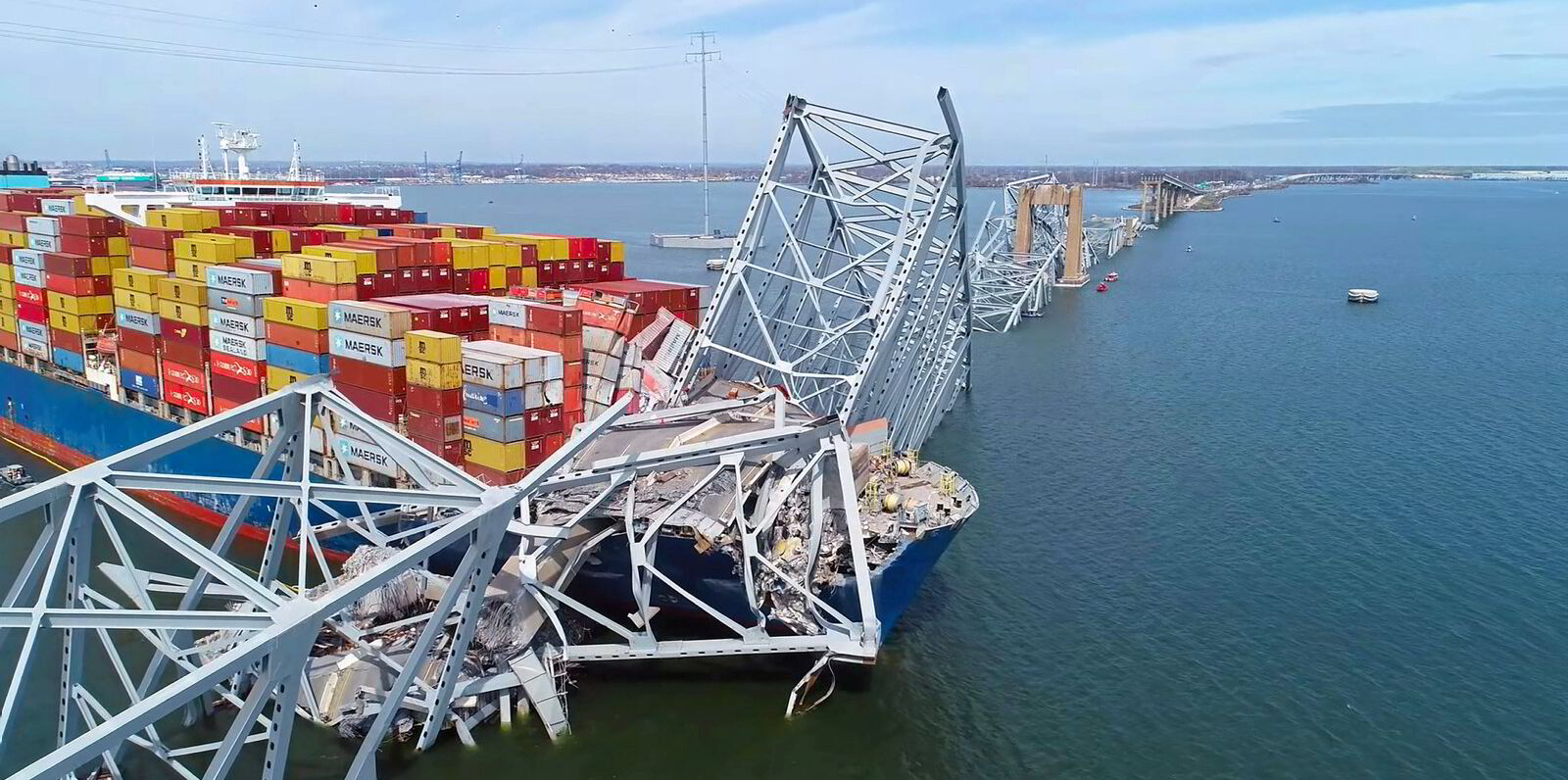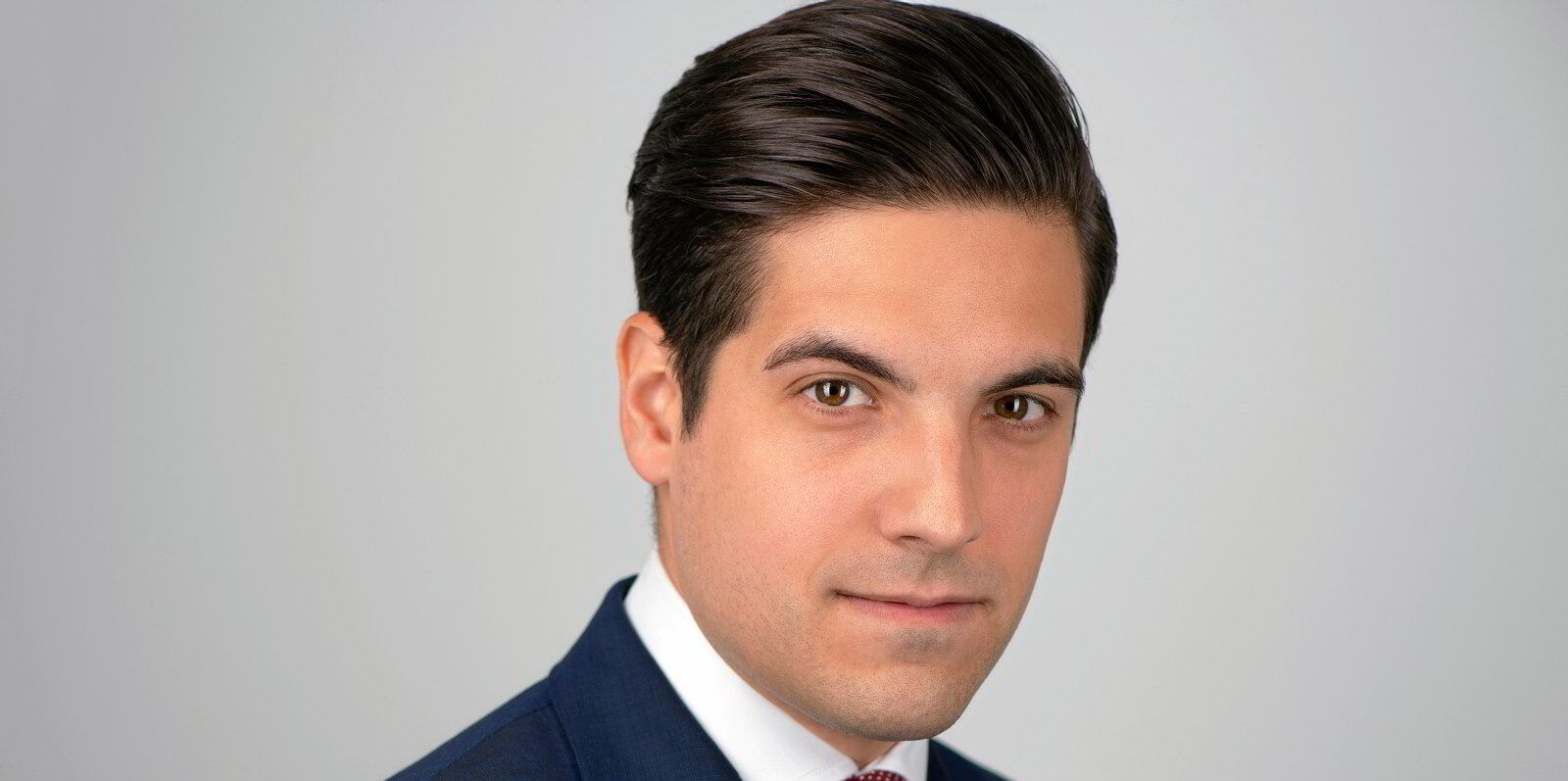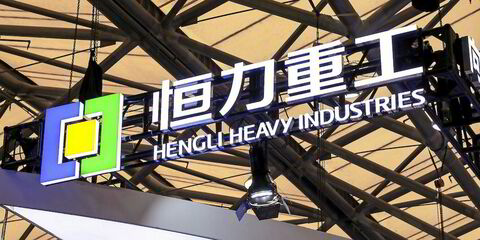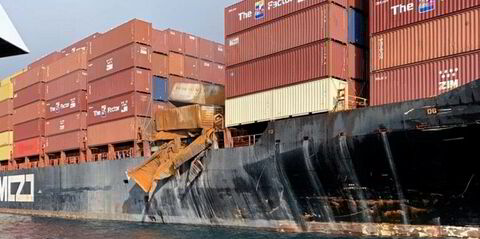The discovery of a loose cable within the circuits of the container ship that brought down a bridge in Baltimore could have a major impact on efforts by the vessel’s owner to limit liability for the multibillion-dollar casualty, a legal expert told an insurers’ conference on Monday.
The owner and operator of the 9,962-teu Dali (built 2015) went to court to try to limit their liabilities to $43.7m using a 173-year-old US law just days after what is expected to become the most costly maritime accident in history.
The move has been challenged by the city of Baltimore and other parties that are looking to the ship’s interests and insurers to shoulder a greater burden of the cost of the disaster that has been estimated at up to $4bn.
But the case brought by the Dali owner, Grace Ocean, and ship manager, Synergy Marine, could have been boosted by the findings from the latest report by US marine accident investigators, which identified a “loosely connected” cable.
Tests showed it could have caused a blackout and loss of power, which was seen before the ship struck the Francis Scott Key Bridge in March this year.
The ship brought down the bridge, blocking a vital waterway, and was stuck for weeks before the twisted wreckage was removed and the ship was refloated. Six maintenance workers were also killed.
Details of the loose cable are included in a 41-page report by the National Transportation Safety Board, which does not go into further detail about the background, maintenance and responsibility for the wires.
But James Mercante, a partner at law firm Gallo Vitucci Klar, said that the “loose wire theory” could help the shipowner show it was not responsible for the blackout.

The ability of the shipowner to limit liability after a major casualty hinges on wording within the 1851 law which seeks to determine whether the crash happened without their “privity or knowledge”.
The law was drawn up after shipowners complained they faced unfair competition from the UK, where such a law had been first introduced in the 1730s. The goal was to ensure that investors in shipping would not be deterred because of the risk of facing enormous liability owing to the actions of crews.
“If it’s something that Hyundai Heavy Industries was responsible for when they built the ship and over the years just worked its way loose, … then the shipowners would have a valid defence that this wasn’t something they were responsible for,” Mercante told TradeWinds.
It would also boost their case if crew maintenance led to their problem, but the owners did not know anything about it.
Mercante told a session at the International Union of Marine Insurers conference in Berlin that he expected the legal action to take seven to 10 years before it was resolved.
Two US politicians have sought to increase liability caps for foreign-flagged vessels as a result of the case and are seeking to backdate any legislation to include the Dali disaster.
The sponsor of the legislation, Democrat congressman John Garamendi, said that his measure would increase the liability to up to 10 times the value of the vessel and its cargo, minus expenses. In the case of the Dali, this would amount to $854m, he claimed.
“If the foreign owners of the cargo vessel that took down the Francis Scott Key Bridge in Baltimore think they can leave American taxpayers holding the bag, I have a message for them: you broke it, you bought it,” Garamendi said in a statement in August.
But Mercante told the audience of 800 underwriters in Berlin that there appeared to be no great political support for the measure and the effort may falter in an election year.
Read more
- Chokepoints, fuels and fires: The challenges facing marine insurers
- Lloyd’s of London reveals how much it stands to lose from Baltimore bridge disaster
- What’s the worst that could happen? How data could help shipowners plan for the unexpected
- Seacon suezmax tanker lifts Niger crude as three-month pipeline row ends
- ‘That can’t possibly be true’: The $4bn marine insurance question left hanging over Baltimore bridge disaster




